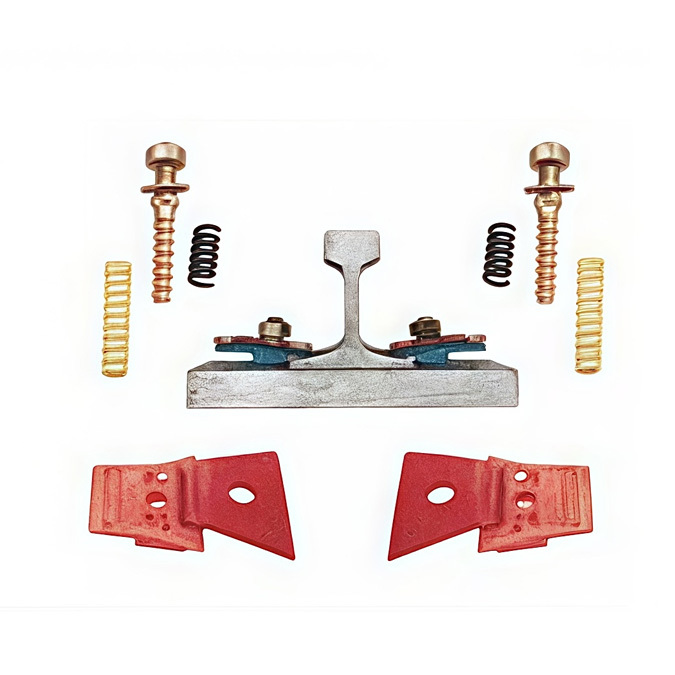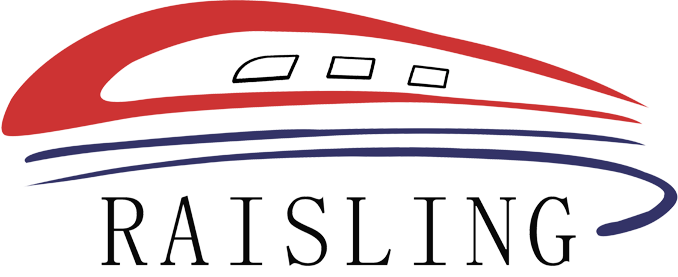The Evolution of Rail Fastening Systems: A Look at Technological Advancements
Jun 05,2025
The Evolution of Rail Fastening Systems: A Look at Technological Advancements Table of Contents 1. Introduction to Rail Fastening Systems 2. Historical Overview of Rail Fastening Technology 3. Types of Rail Fastening Systems 4. Technological Advancements in Rail Fastening Systems 5. Materials Used in Modern Rail Fastening Systems 6. Enhancing Safety and Reliability wit

The Evolution of Rail Fastening Systems: A Look at Technological Advancements
Table of Contents
- 1. Introduction to Rail Fastening Systems
- 2. Historical Overview of Rail Fastening Technology
- 3. Types of Rail Fastening Systems
- 4. Technological Advancements in Rail Fastening Systems
- 5. Materials Used in Modern Rail Fastening Systems
- 6. Enhancing Safety and Reliability with Modern Systems
- 7. Sustainability in Rail Fastening Systems
- 8. Future Trends in Rail Fastening Technology
- 9. Frequently Asked Questions
- 10. Conclusion
1. Introduction to Rail Fastening Systems
Rail fastening systems play a crucial role in ensuring the stability and safety of railway tracks. These systems secure the rails to the sleepers (or ties), providing the necessary support to withstand heavy loads and dynamic forces from trains. As rail transport continues to evolve, so too do the technologies that underpin this vital infrastructure. Understanding the evolution of rail fastening systems offers insights into their essential functions and the innovations that drive their development.
2. Historical Overview of Rail Fastening Technology
The history of rail fastening systems dates back to the early days of rail transport. Initially, wooden dowels and spikes were used to fasten rails to wooden ties. However, as trains became heavier and traveled at higher speeds, the need for more robust and reliable fastening methods emerged.
During the 19th century, iron and steel became the materials of choice for rail fastening. The introduction of the **cast iron dog spike** was a significant advancement, providing greater durability and holding capacity. By the early 20th century, the development of the **Pandrol clip** marked a turning point, allowing for easier installation and maintenance.
Fast forward to today, and we see a rich tapestry of technologies and materials that define modern rail fastening systems. Innovations have enhanced their performance, safety, and longevity, paving the way for a more efficient rail network.
3. Types of Rail Fastening Systems
There are several types of rail fastening systems used in modern railways, each designed to suit specific operational requirements and environmental conditions. The most common types include:
3.1. Embedded Fastening Systems
Embedded fastening systems are integrated into the concrete slab or foundation. They offer excellent stability and are commonly used in urban transit systems where vibrations must be minimized.
3.2. Conventional Fastening Systems
Conventional systems use clips and bolts to secure rails to wooden or concrete ties. This type is prevalent in freight and long-distance passenger rail services due to its robustness.
3.3. Ballasted Fastening Systems
These systems rely on gravel or ballast to support the track. Ballasted fastening systems are widely used for their ease of installation and maintenance. The ballast provides lateral stability to the track.
4. Technological Advancements in Rail Fastening Systems
Innovations in rail fastening technology focus on enhancing performance, reducing maintenance costs, and improving safety. Some key advancements include:
4.1. Development of High-Performance Materials
New composite materials and advanced polymers are increasingly used in rail fastening systems. These materials provide superior durability, corrosion resistance, and weight reduction, enhancing overall system performance.
4.2. Smart Fastening Systems
The integration of IoT (Internet of Things) technology into rail fastening systems allows for real-time monitoring of track conditions. Smart systems can automatically detect stress and wear, facilitating proactive maintenance and improving safety.
4.3. Improved Installation Techniques
Advancements in installation techniques, including the use of specialized machinery, have reduced installation times and improved accuracy. This efficiency translates into lower labor costs and minimized disruptions to rail operations.
5. Materials Used in Modern Rail Fastening Systems
The choice of materials in rail fastening systems is critical for performance and longevity. Common materials include:
5.1. Steel
Steel remains the primary material for rail fastening systems due to its strength and durability. Innovations in steel processing have led to the development of high-strength variants that enhance performance under extreme conditions.
5.2. Elastomers and Polymers
Elastomers and polymers are increasingly used for rail clips and pads. These materials offer superior resilience and noise reduction, enhancing passenger comfort and reducing wear on tracks.
5.3. Composite Materials
The use of composite materials, such as fiber-reinforced polymers, is gaining traction. These materials are lightweight, resistant to corrosion, and provide significant performance benefits over traditional materials.
6. Enhancing Safety and Reliability with Modern Systems
Safety is paramount in rail transport, and modern rail fastening systems contribute significantly to the overall reliability of the railway network. Key factors include:
6.1. Vibration Damping
Modern fastening systems are designed with vibration-damping features that minimize the impact of dynamic forces. This reduces the risk of track deformation and enhances passenger safety.
6.2. Load Distribution
Innovative designs ensure that loads are evenly distributed across the rail and ties, reducing the risk of failure. This load distribution is crucial for maintaining the integrity of the rail network.
6.3. Maintenance-Free Solutions
Advancements in materials and design have led to the development of maintenance-free fastening systems. These solutions require minimal upkeep, resulting in reduced operational costs and increased safety.
7. Sustainability in Rail Fastening Systems
As the rail industry faces increasing pressure to adopt sustainable practices, rail fastening systems are not left behind. Innovations focus on:
7.1. Recyclable Materials
The use of recyclable and sustainable materials in fastening systems is becoming more common. This approach reduces the environmental impact of rail construction and maintenance.
7.2. Energy Efficiency
Manufacturing processes for rail fastening systems are increasingly energy-efficient, reducing carbon footprints associated with production. Sustainable practices are vital for a greener rail industry.
8. Future Trends in Rail Fastening Technology
The future of rail fastening systems is poised for exciting developments. Anticipated trends include:
8.1. Increased Automation
Automation in installation and maintenance processes will streamline operations, enhance accuracy, and reduce labor costs.
8.2. Advanced Monitoring Systems
The integration of advanced sensors will allow for more sophisticated monitoring of track conditions, enabling predictive maintenance and enhancing safety.
8.3. Growth in Electrification
As rail networks move towards electrification, rail fastening systems will need to adapt to support electric trains, focusing on reducing electromagnetic interference and enhancing performance.
9. Frequently Asked Questions
9.1. What are rail fastening systems used for?
Rail fastening systems secure rails to the sleepers, ensuring stability and safety for trains traveling at high speeds and heavy loads.
9.2. How have rail fastening systems evolved over time?
Rail fastening systems have evolved from simple wooden spikes to advanced technologies that incorporate smart monitoring and high-performance materials.
9.3. What materials are commonly used in modern rail fastening systems?
Steel, elastomers, polymers, and composite materials are commonly used, each offering unique benefits in terms of strength, durability, and performance.
9.4. How do modern fastening systems enhance safety?
Modern systems feature improved vibration damping, load distribution, and maintenance-free designs, significantly enhancing the overall safety of the rail network.
9.5. What are the future trends in rail fastening technology?
Future trends include increased automation, advanced monitoring systems, and support for the electrification of rail networks, all aimed at improving efficiency and safety.
10. Conclusion
The evolution of rail fastening systems reflects the broader advancements in rail technology and infrastructure. As we look ahead, the continuous innovations in materials, design, and technology promise to enhance the safety, reliability, and sustainability of rail transport. By understanding these advancements, stakeholders can make informed decisions that will shape the future of rail systems globally. Embracing these changes will be essential for meeting the demands of modern transportation and ensuring a safe, efficient, and environmentally friendly rail network.
Recommended
There is one sheet production line and two high-precision engraving machines, with an annual production capacity of 6 million railway special height adjustment pads.
Electrostatic spraying workshop
There is one electrostatic spray equipment production line and one spray paint production line, with an annual production capacity of 10,000 tons.
Contact Us


